Apple Watch 7
Apple Watch 7 - two minute review
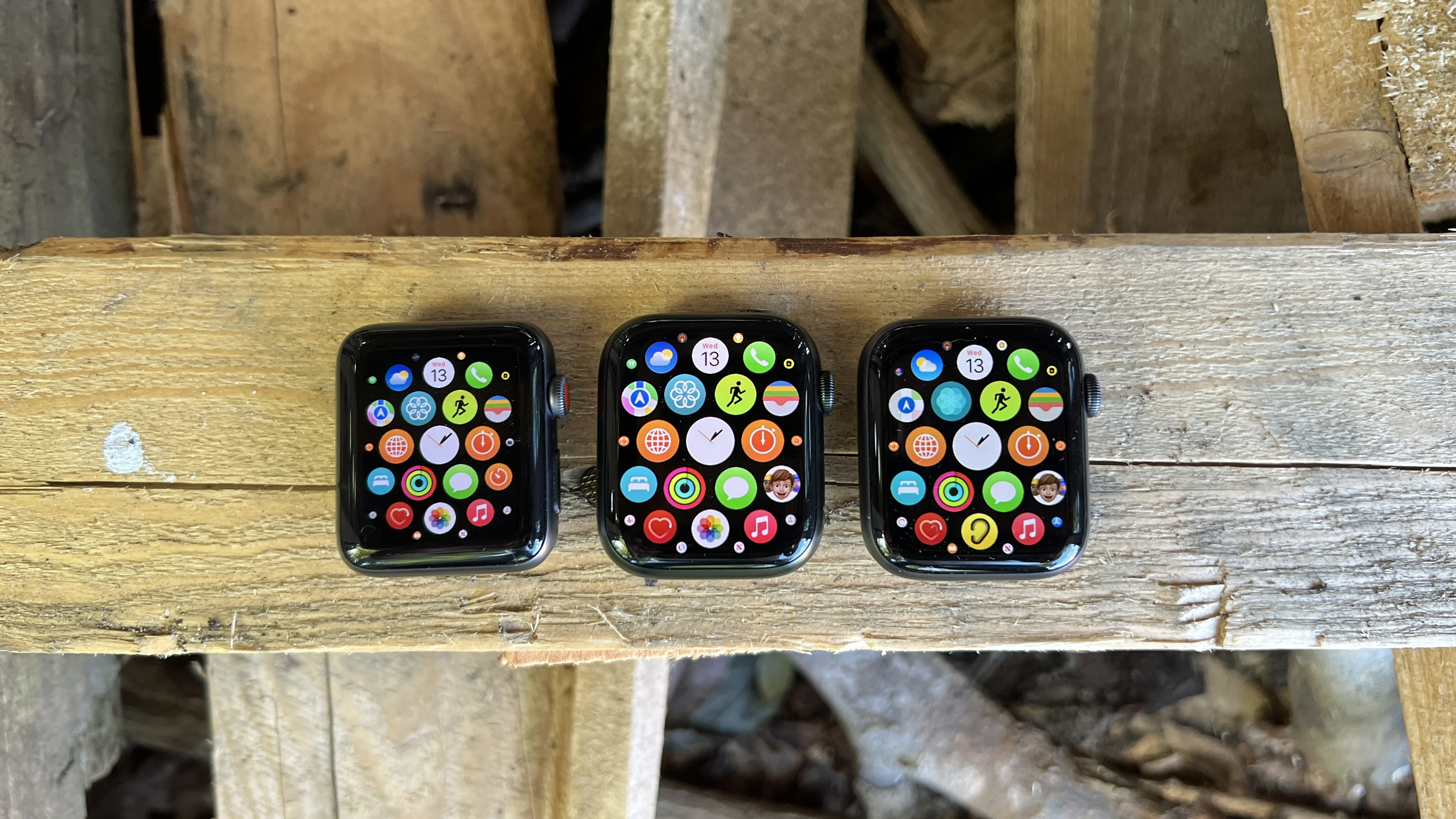
The Apple Watch 7 replaces last year's Watch 6 as the premium model in Apple's wearable range, joining the Watch SE and Watch 3 for those wanting a second screen to complement their iPhone.
It's not that much of an upgrade over last year – the main difference is the screen, which is 20% larger. It still packs the impressive feature set that makes it well worthy of your consideration, and it's definitely the best Apple Watch yet... but only marginally.
While most will be buying this Watch so that they don’t have to take their phone out of their pocket as often, or because they want a decent fitness companion, you're also getting good heart rate monitoring and a range of useful apps, all wrapped in an attractive package.
That package comes in five new colors, and the larger screen means everything is slightly more visible than on the Watch 6 or SE. It also has the always-on display that means you don’t need to raise your wrist to see the time (something the Watch SE doesn't offer) and the glass covering the attractive OLED display is slightly curved – although we couldn't really see much benefit to this.
We had hoped for more of a design upgrade with the Watch 7 – flat edges to match the new iPhone design, an even bigger screen... something that would clearly justify upgrading to the latest version of the Apple Watch.
The larger screen does allow for more features – for instance, you can see more of your messages or have a larger surface area for bigger buttons to tap. Apple also thinks this extra display space means it’s time to add a keyboard to the Watch – and we have to say we found it pretty easy to peck out messages on the Watch 7 (although dictation was just as good, and less fiddly).
The power inside hasn't been upgraded year on year, so although the chip here is called the S7, it brings no power advantage – it's just been reconfigured to allow for the slightly larger design. That's not to say you'll want for power, as everything runs super-smoothly on the Watch 7, with the intuitive WatchOS 8 platform allowing you to start a workout, view images or read messages with ease.
When it comes to the fitness prowess of the Watch 7, you're getting an enhanced cycling mode – this watch can now detect when you're cycling, and that worked fine for us, although it didn't notice when we'd stopped and forgotten to end the workout.
Overall we found the new Apple Watch to be a decent fitness companion – and you get three months of free Fitness+, which means you've basically got a workout in your pocket any time of the day or night.
The Watch 7 does the basics of running, cycling and swim tracking well (among other workouts), and there are some nice extras like the meditation app, which we often enjoyed using, and Apple's ring system, which lets you know how active you're being during the day, is useful and fun to view.
The electrocardiogram and blood oxygen monitoring won't be of much use to a lot of people; we'll dig into that more below, but these headline features aren't going to be a key reason to buy for many.
While the Apple Watch Series 6 is still on sale, we’ve a lot of trouble recommending the new Watch 7. But when that sells out, if you want a high-end Apple Watch, this will be your only option – and with a decent display, good fitness tracking and easy-to-read notifications, Apple is slowly ironing out all the reasons not to buy one of its wearables.
Apple Watch Series 7 price and release date
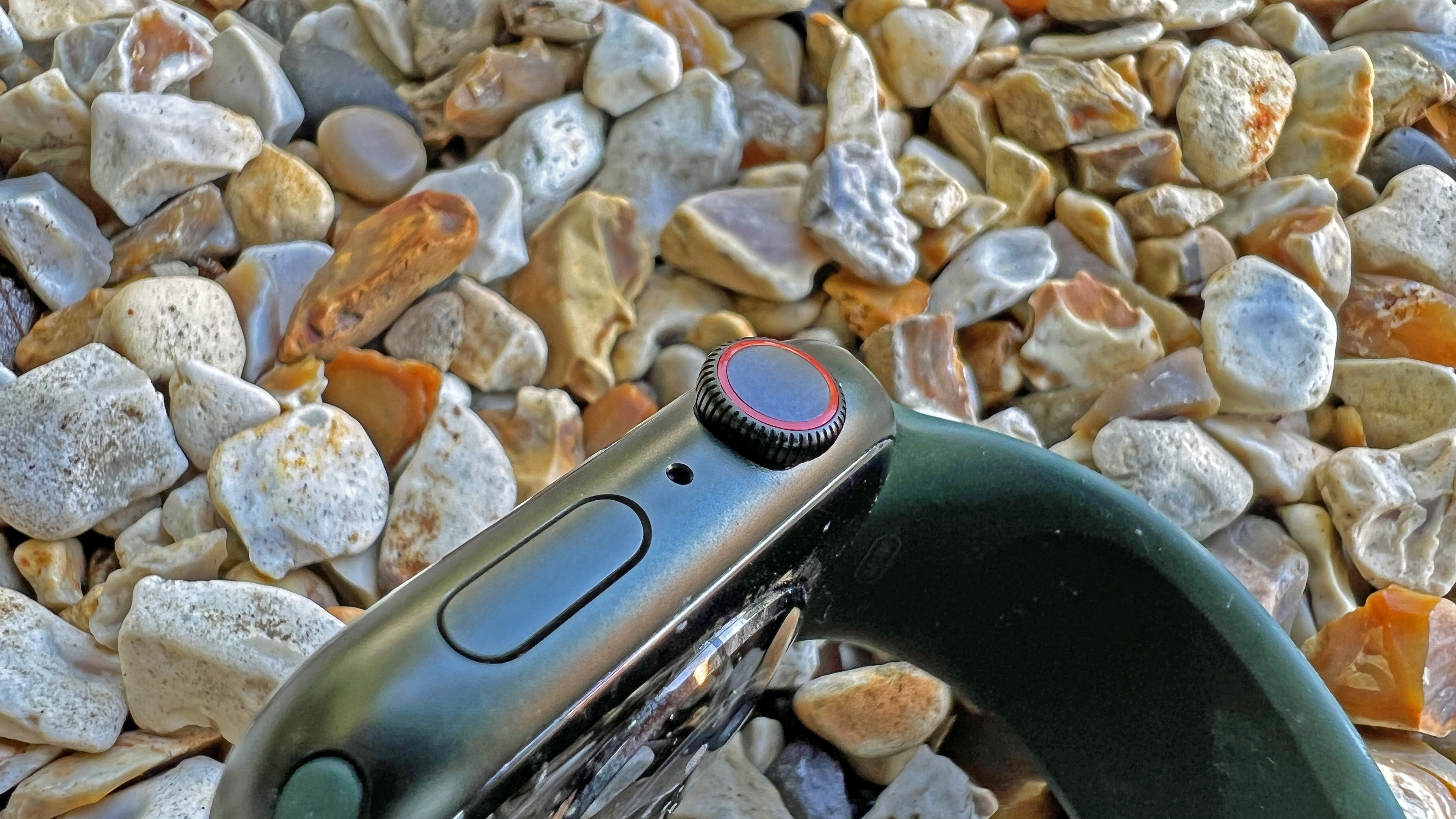
The Apple Watch 7 debuted on September 14, with an on-sale date of October 15. It comes in the usual small and large sizes, although these have been slightly expanded to 41mm and 45mm.
The Apple Watch 7 price starts at $399 / £369 / AU$599 for the 41mm variant, and rises to $429 / £399 / AU$649 for the 45mm model.
If you want the cellular version to allow you to use it without the phone, the 41mm version costs $499 / £469 / AU$749 and the 45mm model costs $529 / £499 / AU$799 - plus the cost of an additional data plan.
There are also Apple Watch Nike Edition and Hermès variants of the Series 7, with the prices of those going up quite dramatically.
It's available in five new aluminum finishes: Midnight (black), Starlight (gray), Green, Blue, and (PRODUCT)RED. There are also three new Nike Sport Loop colors, as well as new Apple Watch Hermès bands.
Design and display
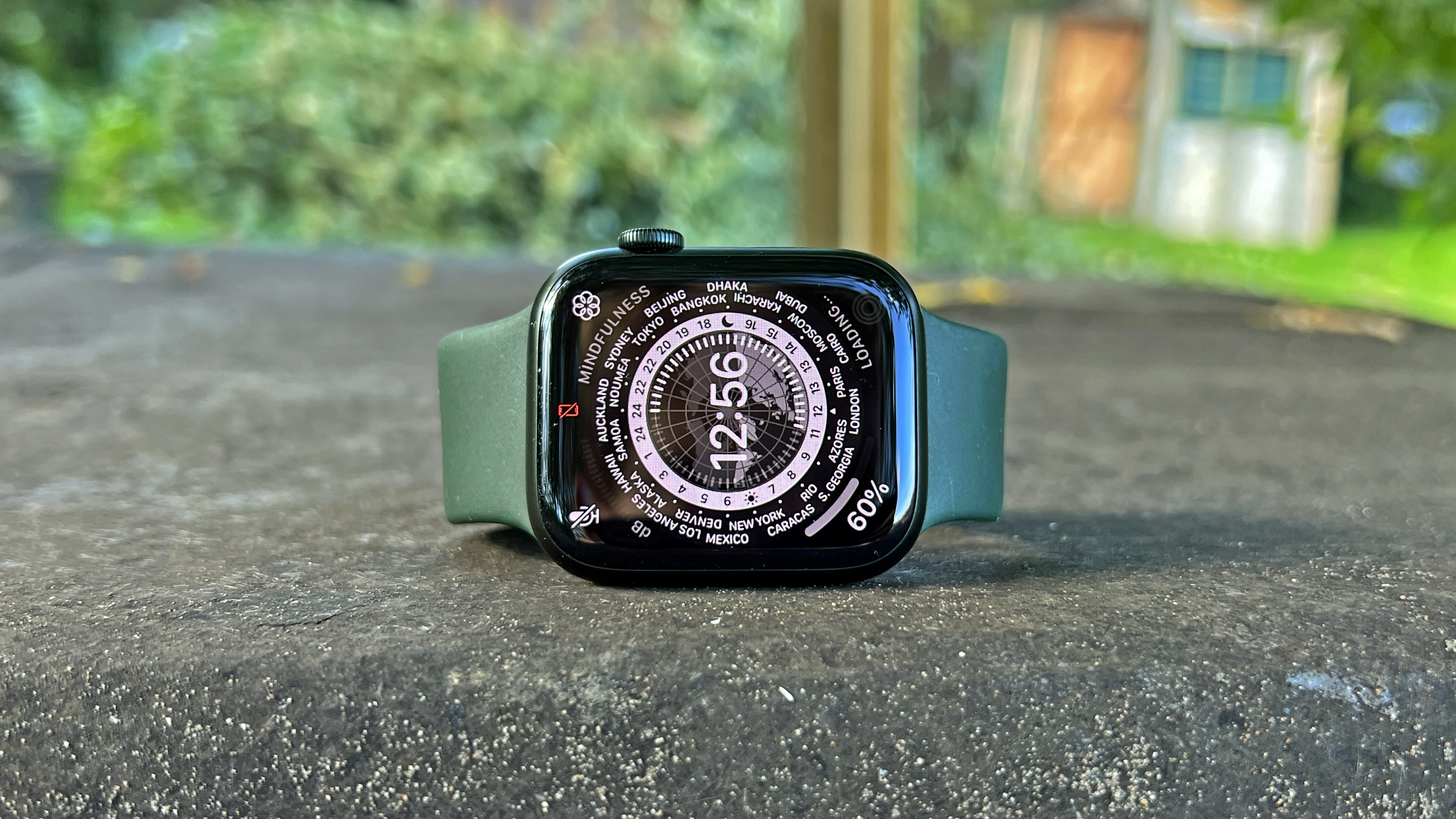
The Apple Watch design is probably the only change you’d notice when comparing this model to the Watch 6 or Watch SE – it’s slightly larger in the frame, and the display is around 20% bigger than on the older models (and a heckuva lot bigger than on the bezel-heavy Watch Series 3, which is also still on sale).
What you won’t be able to discern when holding it for the first time is the improved robustness – with IPX8 on board, this watch is now essentially dustproof as well as waterproof (to 10ATM, for open water swimming and deeper dives), meaning dirt and other damaging particles can’t get under the frame.
The glass on top of the bright and vivid OLED display has also been hardened to reduce the chance of scratching or breaking – although we’ve never seen a sniff of damage on any of the watches we’ve reviewed over the years.
We assume that this protection is designed to make the Watch 7 attractive to the more outdoorsy, white-water-rafting types, but then again they’re probably already looking at something like the Garmin Fenix range, which offers even better protection and more activity-tracking options.
There are five new colors on offer with the Watch 7, which have fancy names like ‘Starlight’ but are essentially gray, green, blue, silver and red;however, the colors are more muted here than on previous models, and are more attractive as a result.
On the rear of the Watch 7 you’ve got the usual array of LEDs firing light under the skin – this can feel a little bulbous at times, but after a while you’ll barely notice it’s there.
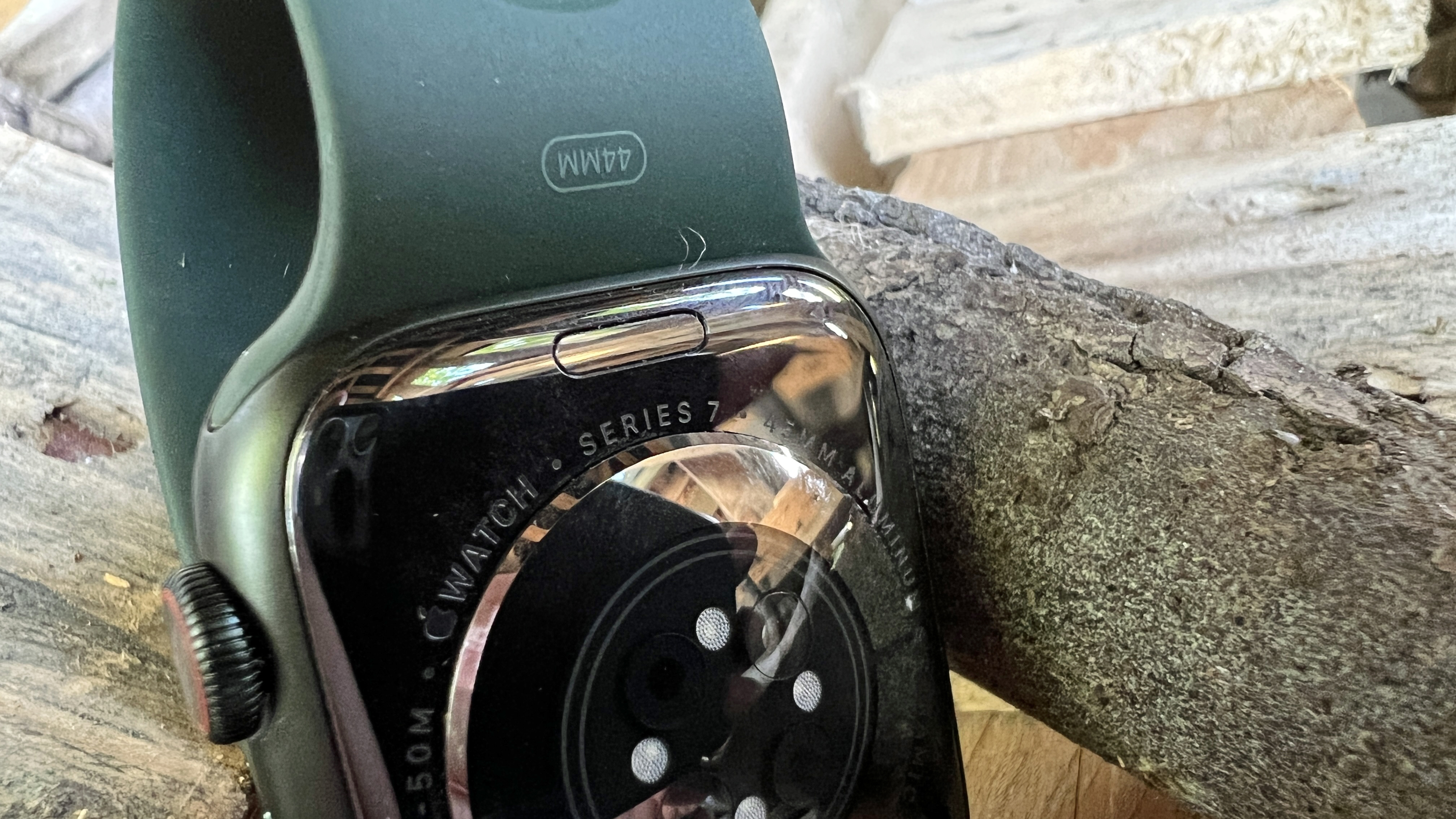
Apple has made a big deal of the fact that the glass covering the OLED display now curves away at the sides of the screen, and there’s no doubt that the smaller bezels around the edge make looking at the watch a more inviting experience (especially when viewing your favorite photos, which stretch to the edge of the screen), although we can’t say it makes a huge difference.
One of the key ways Apple likes to show this off is through the new Contour watch face, where ooking from the side of the Watch 7 you can see the numbers spilling into the frame of the wearable - but often trying to look at your watch from the side would trigger the screen going to sleep, so it didn’t quite have the desired effect.
The larger screen real estate also means more options for modular watch faces – for instance, the Modular Duo face now can have two large widgets, to show you more information at a glance. Again this is a nice extra, but not a reason to upgrade from a Series 5 or Series 6 Watch.
However, if you’re using an Apple Watch 4 or earlier you will notice one big change: the always-on display. This has been around since the Watch 5, but it’s now brighter, making it easier to view when you’re just glancing down at your wrist.
It’s also now used by more of Apple’s own apps – where previously the screen would just dim and a clock would be displayed if an app wasn’t optimized for the always-on display, support is now far more wide-ranging, and developers can add the functionality to their apps (although we didn’t see too many offering this feature just yet).
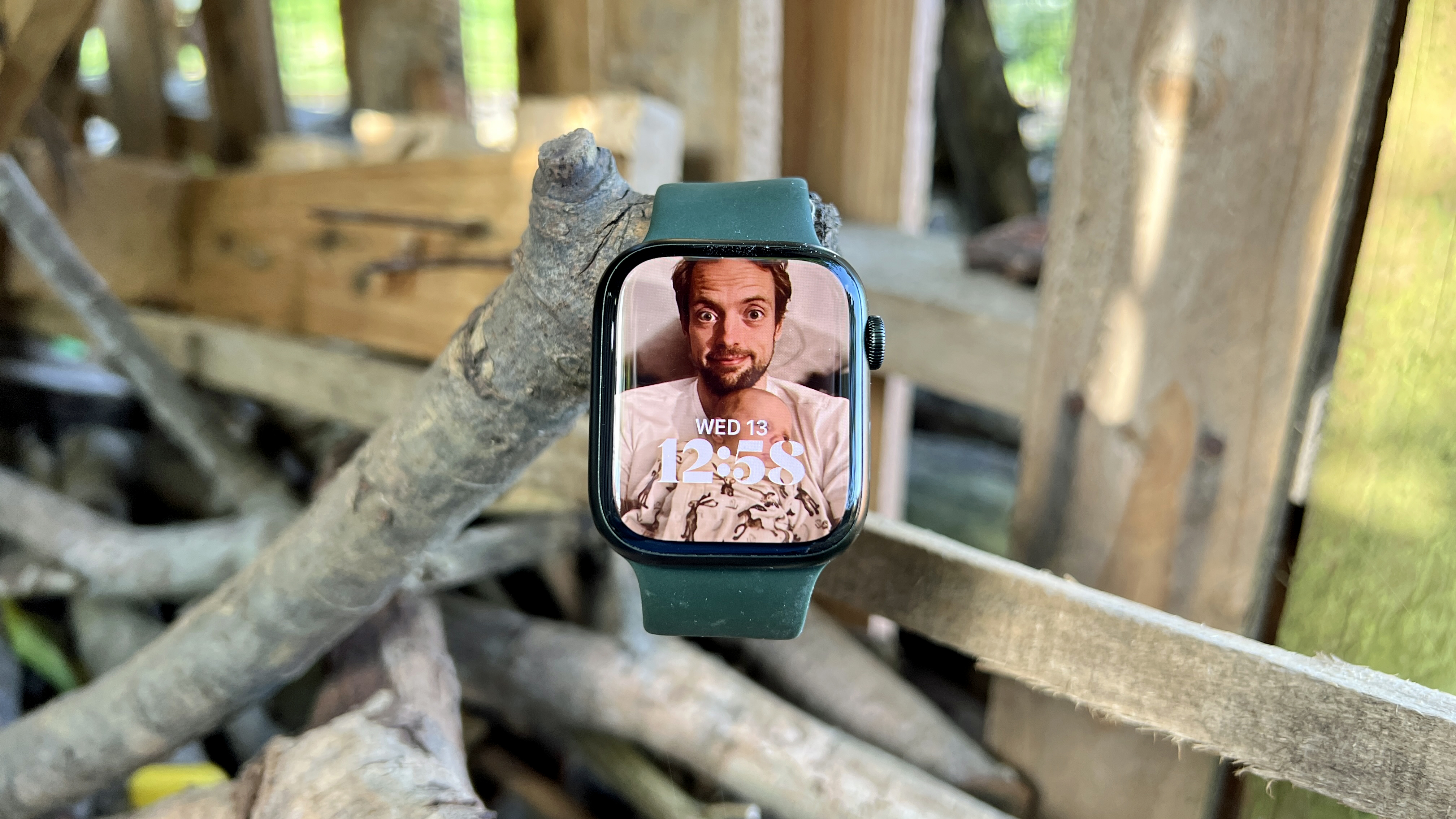
The always-on display isn’t always a good thing though, as there are times when you don’t want a blindingly bright watch, but don’t want to have to put the display into Theater Mode, which shuts off the display. Would it be so hard for Apple to implement something in between these two options – a just-about-legible clock that auto-appears in very dark scenes?
That said, the always-on display is a world away from the annoyance of not being able to see the time unless you flicked your wrist, which is how things were on the early Apple Watches – now we’d say the Watch 7 is as good as a normal, non-smart watch in terms of visibility.
Another feature the larger screen allows for is an on-screen keyboard – we can’t say it’s something we’ve been crying out for on the Apple Watch, as earlier smartwatches from other brands had this functionality and we never really used it.
It’s serviceable, insofar as we could tap out short messages, but we’d much rather use the voice dictation, or just send an emoji in response.
Apple has nailed the display quality on its Watch since the very first iteration, and with every upgrade things get slightly better – this is one of the best displays on any smartwatch, and it’s clear, bright and legible in any situation.
Fitness
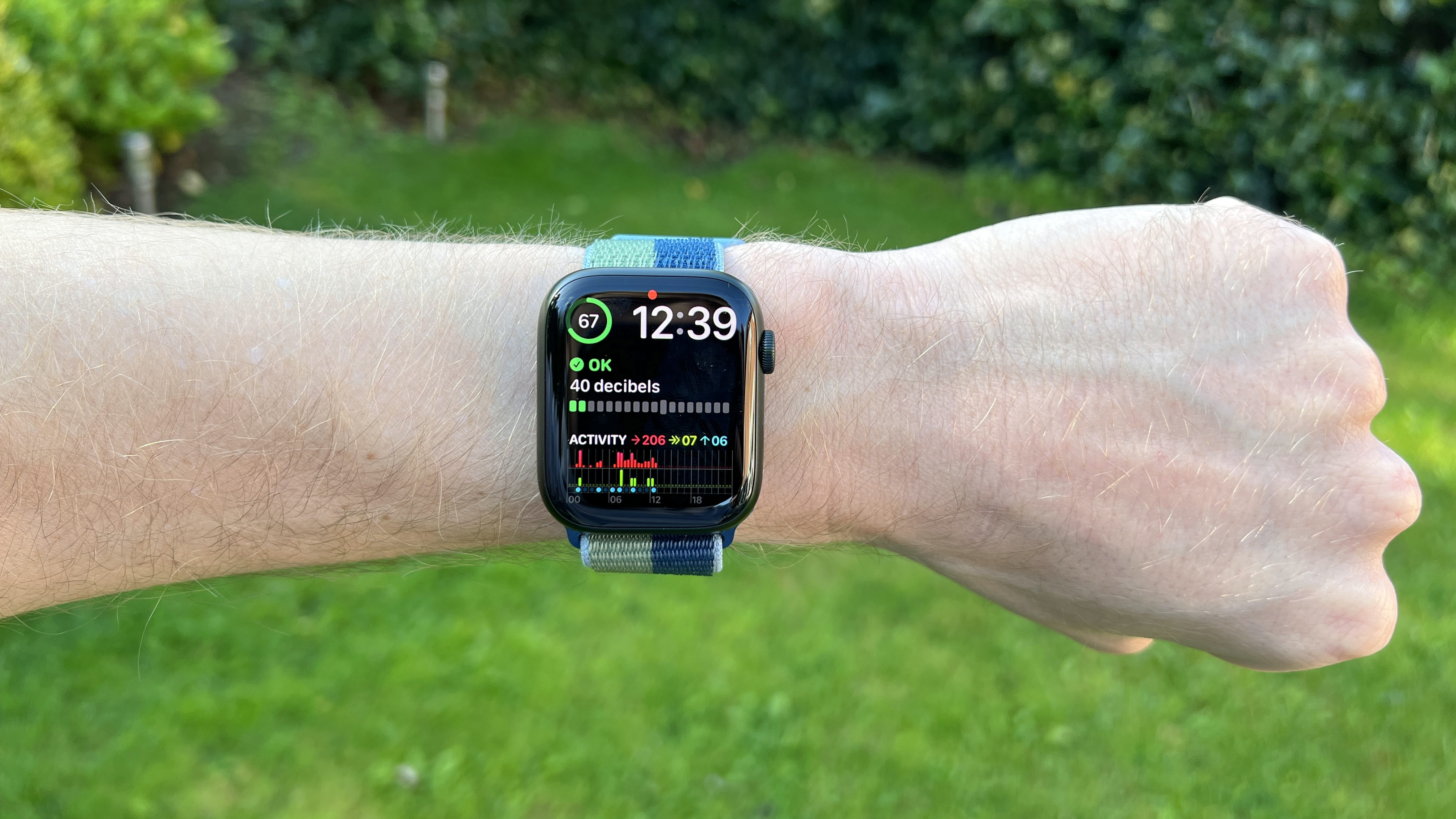
The Apple Watch Series 7 is centered around fitness: whether it's the simple Move Rings that fill and encourage you to be active, the ever-increasing number of workouts that can be tracked, or the new cycling features, it's clear that Apple is trying to make the Watch 7 more attractive to exercise fiends.
However if you're someone who’s really into running, cycling, swimming or similar, it's still hard to recommend the Apple Watch. Regular readers will know that we’ll always review the Apple watch with a good run, and we’ve been waiting years for Apple to just add in a few basic things like interval sessions, heart rate alerts and the like.
Instead, you're getting a basic GPS device that tells you how far you've run, for how long, your heart rate and... well, that's mostly it. The GPS accuracy generally seemed fine when benchmarked against the high-end Garmin Forerunner 945, clocking in within 0.03 miles over a nearly eight-mile distance.
Similarly, the readings from the heart rate monitor were almost identical to those from the chest strap we tested it against, rising and falling within a few seconds of the strap as we switched gears between a gentle trot and harder hill sessions or sprints.
However, this accuracy was only achieved when we pushed the Watch 7 further up the arm towards, which has been shown to provide better accuracy from the heart rate monitor. This is okay if you've got a velcro sport band (although it will still slip forward or twist), but if you've got a rubberised band, it's going to quickly start slipping.
We found that using the heart rate monitor in a more normal place on the wrist just didn't yield accurate results all the time – it sometimes gave sensible numbers, but other times the reading would shoot up for no good reason when our effort hadn’t increased.
While we're talking heart rate and fitness, let's chat quickly about the electrocardiogram (ECG) and blood oxygen (SPO2) monitoring, as these were big selling points on the Watch 5 and Watch 6 respectively, and are present and correct here again.
We think the ECG sensor is a great inclusion – while you can run your own test, it's really there to spot atrial fibrillation in those who think they're generally quite healthy. We've seen a few stories of the Apple Watch picking up undiagnosed issues, and it's a reassuring feature to have.
However, if you’re on the fitter side, and have a heart rate that regularly falls below 50 beats per minute, this sensor just won’t work, so factor that in if you’re a hardcore exerciser.
The SPO2 sensor makes less sense in our eyes. First, it's not 'medically' accurate, meaning a doctor would likely want to run their own test with proper equipment, so it's hard to know how much to trust this sensor.
There's also the lack of alerts – if your blood oxygen drops too much overnight, it would be useful to get an alert about it (in the same way you'll be told if your heart rate drops too low) so that you could head to your physician to be checked for something like sleep apnea.
While it's nice to be able to check your blood oxygen saturation level throughout the day, this feature seems like more of a gimmick. If the doctors can't use the data, and if the watch doesn't alert you to any issues, how useful is it really?
We do like Apple Fitness+. These trainer-based workouts are available across the iPhone, iPad and Apple TV, and asks to connect your Apple Watch to read the heart rate etc and display it on the screen.
There are plenty of workouts to choose from, and with regular use you’ll come to develop a rapport with your trainers (even though it's all digitally recorded) and gravitate towards their sessions.
These are hard workouts too – we enjoy the competitive aspect of trying to outstrip the average person taking a class, and while some workouts could be a little more challenging and complex, the free three-month trial is an excellent way for you to find out more about the service and see if it suits your lifestyle.
Another powerful health feature we wanted to talk about is the redesigned Breathe app – this is now called Mindfulness, and it now packs a Relax mode. In this mode you’ll be given a motivational question to reflect on at the start of the activity, and you'll spend a minimum of one minute looking at merging and colliding colored shapes on the watch while thinking about the posited notion.
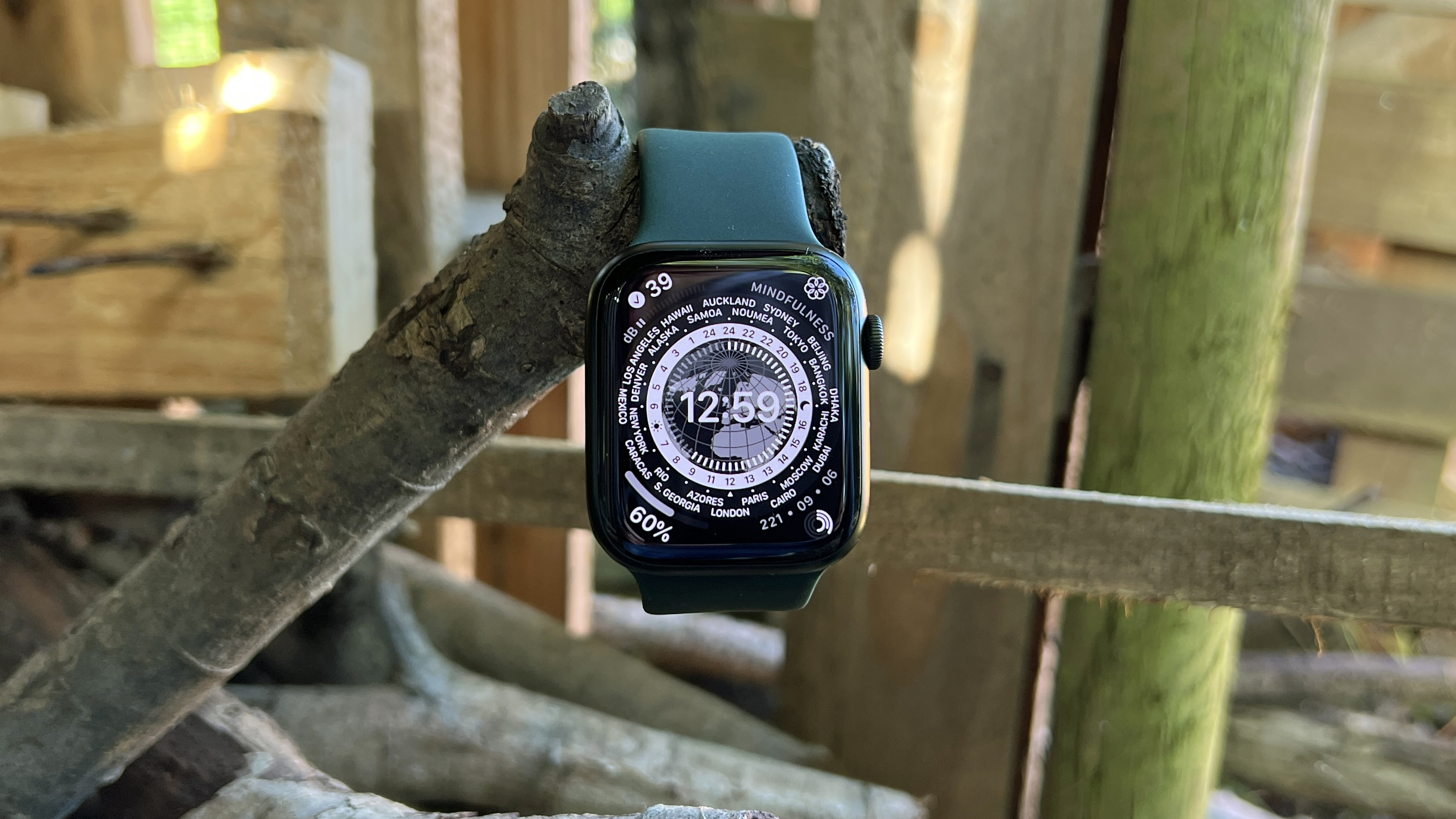
It's hypnotic, and we found the mental state it put us in certainly does help with trying to stay calmer in this modern world. Combine this with one of the Fitness+ workouts, which now include a guided walk or meditation work to help you achieve a sense of calm during the day, and the Watch 7 is one of the best wellbeing devices we’ve used.
The overhauled Meditation app really is one of the reasons to buy an Apple Watch – not necessarily the Watch 7, because these features are on every Apple Watch on sale thanks to the new WatchOS 8 software update. We've yet to try a fitness watch that matches the pleasant vibration that tickles your wrist to tell you to breathe in and out calmly.
One final thing in the health department: sleep tracking appeared last year on the Apple Watch 6, and we had high hopes that Apple was going to do something cool with it this year. Basically, though, what you see every morning is still just a note that tells you the weather, and the battery life you have left, but nothing about the quality of your sleep – whether you had dreams or light sleep, or whether you recovered well enough through great deep sleep.
It's just too basic for this feature to work well – it should be a simple matter for your watch to give you a few quick pointers on how you can sleep better, while also giving you some kind of score so that you know what you can improve upon.
We had hoped that Apple would have brought a proper upgrade to the Apple Watch 7 to give you additional insights into your sleep – just seeing some bars that tell you when you were likely asleep, and not much else, isn’t that interesting or helpful.
While the Watch 7 is not a tracker that will help you target your weaknesses and suggest ways to improve, nor give you more detailed data during your workouts or rest periods to dig into, it is getting better when it comes to showing you trends over time.
You’ll soon learn your average sleep stats, step counts and respiratory rate (and many other metrics), and be able to see if they’re trending up and down over time. However, that’s all you’ll get, and it’s up to you to interpret that data… seeing things trend up or down without some explanation as to why can be confusing, and it would be nice to get a bit more feedback.
WatchOS 8 and the ‘redesigned’ chipset
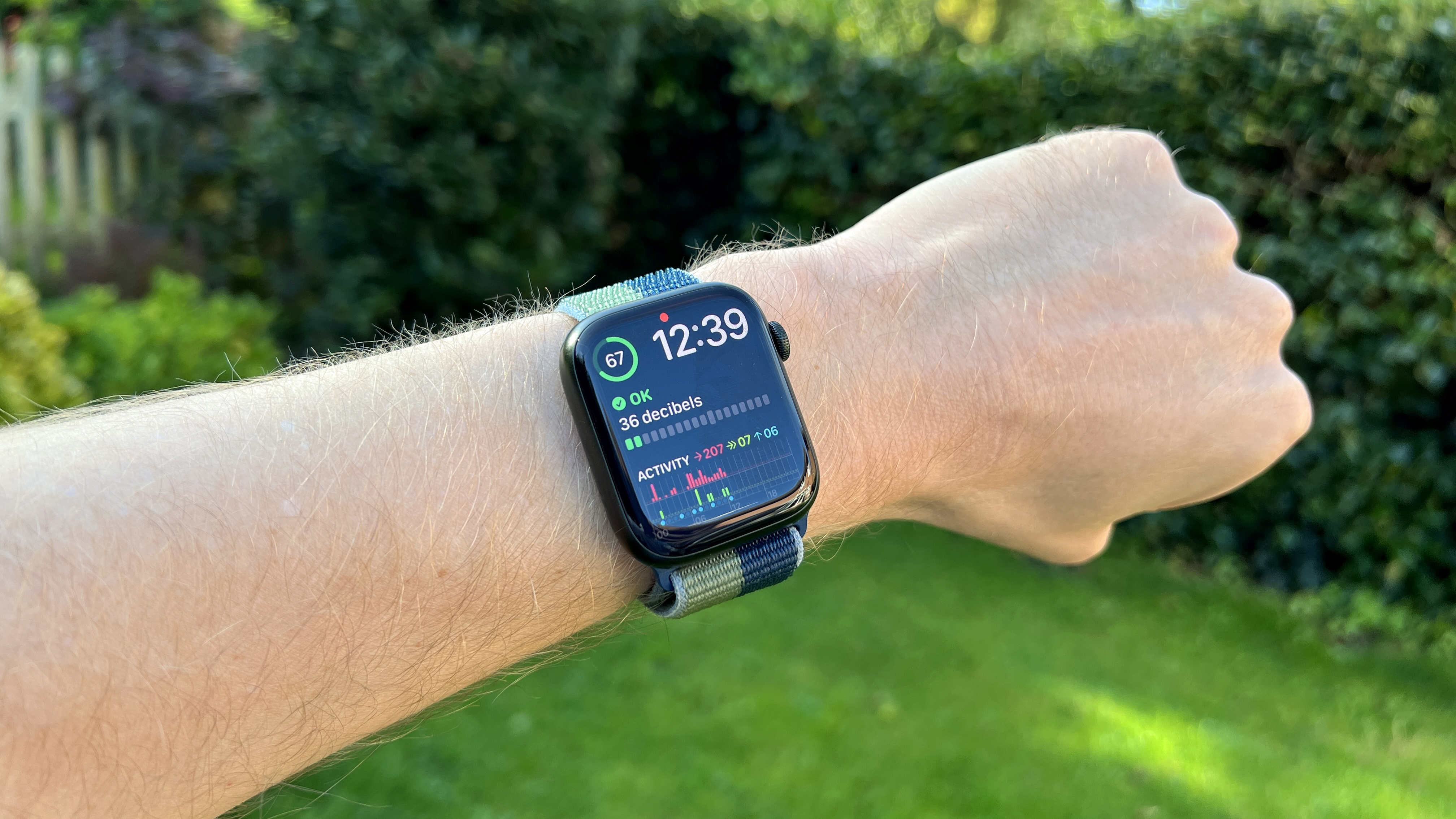
WatchOS 8 is the new software from Apple for 2021, but, like the design of the new watch, it doesn't bring a whole lot that’s new to the Apple Watch experience.
The Watch 7 is powered by a 'new' chipset inside, which is the S7 chip, but this isn't any more powerful than the S6 found in the Watch 6 – it's just redesigned to fit in the new chassis (and likely to keep pace with the '7' of the Watch name).
That said, we consistently found that the Watch 7 responded very well to anything we asked of it. Flipping through apps is slick, gliding easily under swipes from the finger or spinning nicely when using the Digital Crown to navigate through menus and the like.
WatchOS has gone through a few iterations over the years, and Apple seems to have finally settled on something useful – the large button on the side will let you jump between apps, while the Digital Crown makes interacting with lists or resizing things a simple task.
We found that the Siri command – just raise the Watch 7 to your lips and ask a command – responded well about 80% of the time, which is still a little on the low side when you're trying to simply set a timer... it doesn't instil confidence, and will mean you might often default to just pressing a button to make sure it fires.
One feature we did enjoy in WatchOS 8 was the new Portrait Mode photos watch face – this allows you to choose your favourite snaps, and the Watch will use the data embedded to insert the clock between the subject and the background.
It looks really nice, and the ability to spin the Digital Crown to make the subject of the picture bigger or smaller was a nice touch too.
The other big feature we used was the Focus mode – well, it was more forced upon us by iOS 15, where's it's a big new feature.
The synergy between the Apple Watch and the iPhone has always been good – mirroring flight mode, or handing off calls or audio between the two, for instance – and in this case, if you've got notifications automatically silenced on your phone when in a certain location, or have set a time to start winding down before sleep, the Watch 7 will automatically enter that mode.
We'd advise spending some time with the new Focus Modes if you've not tried them already – they can be a real boon, but you need to make sure that the people who you want to be able to contact you can do so, and that the apps you use regularly can still 'break through' at the key times.
While it sounds like WatchOS 8 doesn't add a huge amount to the mix, it does have a few little flicks and tricks to play with, like multiple timers and enhanced messaging options if you like to respond to missives from the wrist.
Apple Watch 7 battery life
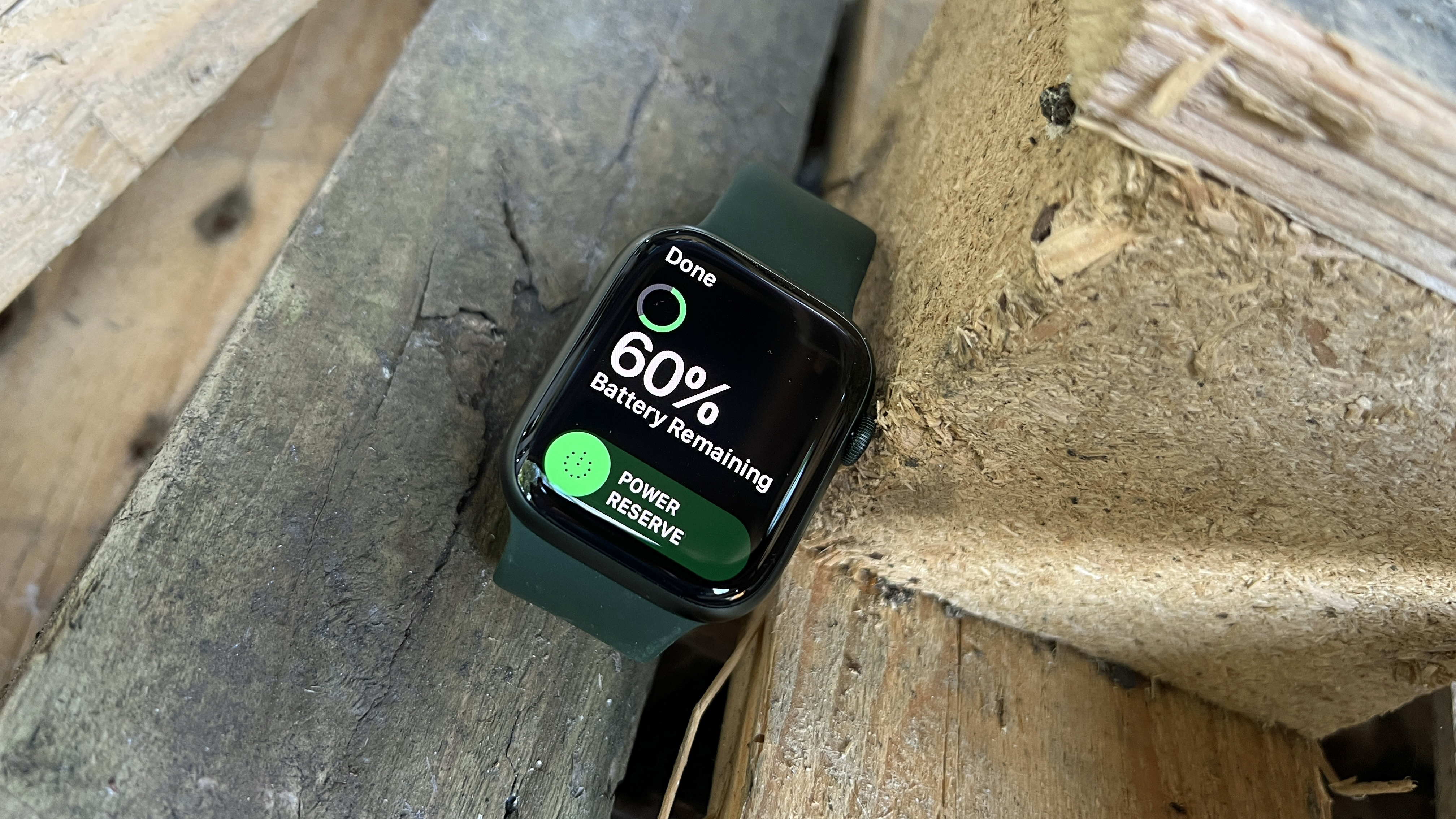
We've been perplexed by the battery life of the Apple Watch for years, and the Watch 7 is no exception… as curiously Apple underplays the performance.
Apple advertises that the Watch 7 should last 18 hours on a single charge, but we regularly got over 24 hours, even with some battery-sapping GPS use in the middle of the day.
Official figures also suggest that it will take 75 minutes to charge your watch fully, when we did it in 64 minutes, and the faster charging cable really does make a difference here: we managed to get to around 50% in 30 minutes, and over 80% in 45 minutes, and it’s so much better than the hours charging used to take on older models.
While this fast charging is useful, it doesn't paper over one of the big issues: the battery life on the Apple Watch 7 isn't good enough. Yes, if you charge it nightly then you won't have any issue with it easily lasting the whole day.
However, if you want to do some sleep tracking, then you're a bit stuck – you can give your watch a 20-minute juice-up before bed to ensure that it makes it easily through the night, but you'll need to develop a routine of giving it about an hour on the charger every morning to make sure you don't run out of power during the day.
We noticed that we'd lose about 15% of the battery power overnight, which is a little more than Apple suggests – it reckons that you can charge the Watch 7 from dead for eight minutes and have enough power to get you through the night, but we only clocked it adding about 8% of charge during that time, which we wouldn't be confident was enough to make it through until morning.
And either way, finding the time to do even quick charges isn't that easy, and we constantly found that we were running out of power on the Watch 7, and then kept only having time for small top-ups.
Battery life of 24-30 hours from a single charge simply isn’t good enough for a modern smartwatch – there are many watches from other brands that can go for days without needing to be connected to a charger, and that's something Apple should be aiming for.
We get that Apple is managing to consistently add new, power-hungry features without diminishing battery life (it's very impressive that the SPO2 sensor doesn't consume loads of battery life, as it does on other devices). And the bright and legible display is great to have, and of course that comes at a cost in terms of power.
Apple has also radically improved the multi-tasking power drain on its watches – we ran for around 50 minutes with a third-party app giving voice directions and the screen displaying a map the entire time, with GPS tracking the run and Spotify playing offline music, and the Watch 7 only lost 10% battery, which was pretty incredible.
But that performance doesn't change the fact that it's really hard to build a consistent charging routine if you like to track your sleep too – Apple needs a new solution to this in future iterations if it's going to stay as one of the top contenders when trying to pick a new smartwatch.
Should you buy the Apple Watch Series 7?
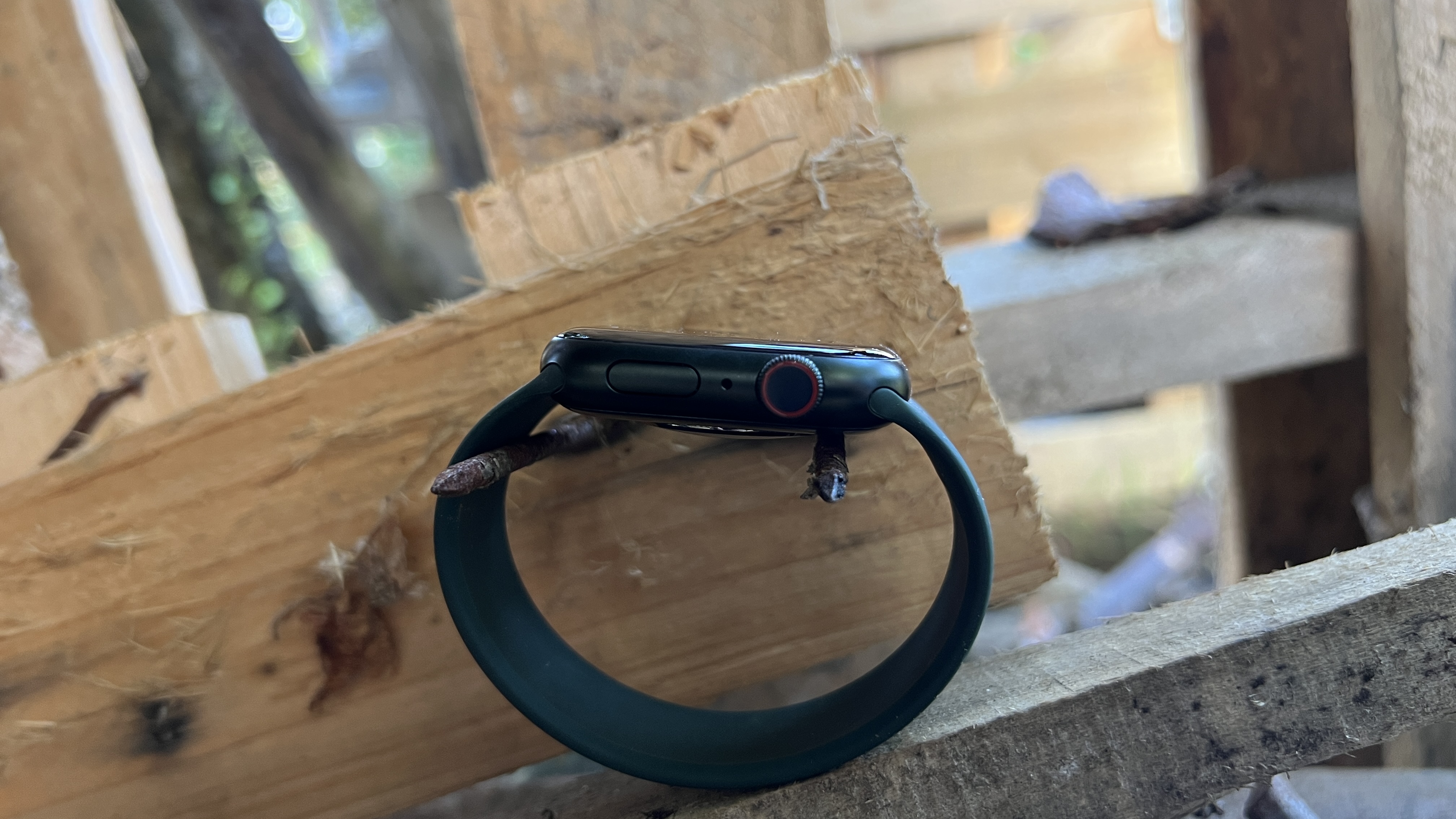
Buy it if…
You’re on the Apple Watch 4
If you love your older Apple Watch and you’ve not experienced the always-on display, you’ll get a kick out of the bigger screen of the Watch 7, and with finally being able to do away with those irritating wrist flicks to just see the time.
You want to start getting healthier
The Watch 7 is a great fitness companion for those wanting to upgrade their fitness, both mentally and physically. It offers so many tracking options, and we found the mindfulness options genuinely refreshing.
Don’t buy it if…
You’re ‘into’ fitness
While we like dabbling with Fitness+, if you’re after structured workouts that will help you to really progress your fitness, the Watch 7 isn’t for you. You can download some decent apps, but you’d be better served by a dedicated fitness watch.
You don’t like daily charging
While the Watch 7 doesn’t need a daily charge, it will need a top-up quite early the next day – with many other smartwatches offering multiple days of use before needing a power up, Apple is lagging behind here.
0 comments:
Post a Comment